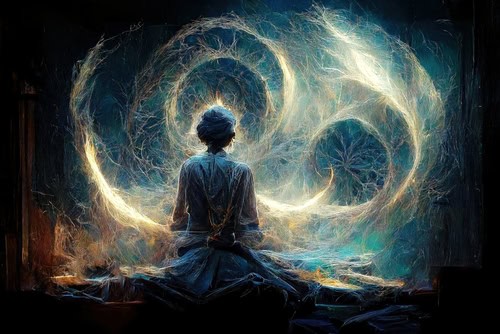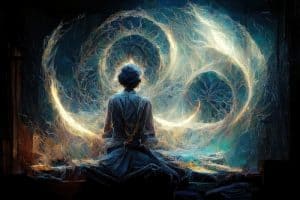
The Transformative Power of Enlightened Masters: Liberating With A Compassionate Master
As we venture into the depths of self-discovery and spiritual growth, we inevitably encounter numerous challenges and obstacles that can impede our progress. In this complex and ego-driven world, it’s easy to become entangled in our own assumptions, projections, and limiting beliefs, leading to confusion and stagnation.
However, with the loving guidance of an enlightened master, we can profoundly accelerate our journey towards liberation, healing, and awakening.
Embracing the wisdom and illumination of a guru like Amma or Paramahansa Yogananda is akin to soaring on the wings of divine grace, rather than struggling through the darkness alone. Their boundless compassion, wisdom, and understanding can profoundly impact our journey, expediting our progress and providing continuous support and guidance.
An awakened master can tenderly guide us through the labyrinth of our own minds, revealing hidden pitfalls and obstacles, and inspiring us to release the shackles of old patterns, emotions, and self-identities that bind us.
With an enlightened master by our side, we can:
~ Gain clarity and insight into our true nature and purpose
~ Overcome limiting beliefs and self-doubt
~ Develop a deeper understanding of the world and our place within it
~ Cultivate unconditional love, compassion, and acceptance
~ Embrace our full potential and live a life of purpose and meaning
~ Receive an outpouring of grace and healing
~ And much more – read on!
Their guidance is not a replacement for our own efforts, but rather a loving nudge that empowers us to tap into our inner strength and wisdom. By surrendering our ego and embracing the wisdom of an enlightened master, we can transcend the limitations of our own understanding and experience the profound beauty and freedom of our true essence.
In the loving embrace of an awakened master, we find the courage to confront our deepest fears, the wisdom to navigate life’s challenges, and the compassion to embrace ourselves and others with unconditional love. Let us embrace this precious gift of guidance and allow ourselves to be transformed by the power of enlightened love.
The Solo Journey
The allure of the solo spiritual journey! It’s a tempting path, isn’t it? To rely solely on our own ego and intellect, to forge our own way through the wilderness of the self. But, dear seeker, beware! This approach is often a recipe for disaster, a surefire way to get lost in the labyrinth of our own making.
In the wisdom of Advaita Vedanta, the ego is seen as a formidable obstacle on the path to liberation. It’s a master of deception, a shape-shifter that masquerades as the self. And when we rely solely on our own ego and intellect, we become trapped in a prison of our own creation. We become ensnared in a web of assumptions, beliefs, and conditioning that perpetuate cycles of suffering and ignorance.
The Pali Canon, the ancient Buddhist scriptures, also warn of the dangers of relying solely on our own ego and intellect. The Buddha taught that the unawakened mind is like a wild elephant, untamed and unpredictable. It’s a mind that’s driven by craving, aversion, and delusion, leading us deeper into the quagmire of suffering.
Truly, there is a safe and proven path to real liberation. Seeking guidance from an enlightened master offers a beacon of hope in the darkness of our own ignorance. These wise and compassionate beings have traversed the treacherous terrain of the self and have emerged victorious, radiant with the light of understanding.
With an enlightened master as our guide, we can navigate the treacherous waters of our own ego and intellect. They offer a mirror to our soul, reflecting our true nature and revealing the illusions that bind us. They provide a roadmap to the ultimate destination, the state of liberation, and offer gentle yet firm guidance to keep us on track.
In the presence of an enlightened master, we can experience a transmission of wisdom and grace that awakens our own inner guidance. We can learn to discern the voice of our true self from the chatter of our ego and intellect. We can develop a deep understanding of the nature of reality and our place within it.
So, dear seeker, don’t be fooled by the allure of the solo spiritual journey. Embrace the wisdom of Advaita Vedanta and the Pali Canon, and seek out the guidance of an enlightened master. It’s a safe and proven path to true liberation, and one that will lead you to the ultimate destination: the state of freedom, peace, and unbridled joy.
Divinity Through History
Throughout history, spiritual seekers have sought out wise and awakened teachers to guide them on their journey. These masters possess a deep understanding of the human condition and the complexities of the spiritual path.
They offer a mirror to our souls, reflecting our true nature and revealing the illusions that hold us back. In India, the land of spiritual diversity and richness, numerous enlightened masters have graced the world with their presence, imparting wisdom, love, and guidance to those seeking liberation.
Here are 10 of the most divine enlightened masters from India:
Amma (amma.org) – Mata Amritanandamayi Devi
Amma, known as the “Hugging Saint,” is a living embodiment of love and compassion. She has dedicated her life to spreading love, peace, and harmony throughout the world. With a mission to embrace the entire world in her loving arms, Amma has hugged millions of people worldwide, imparting her divine energy and guidance. Her selfless service and humanitarian efforts have made a profound impact on the lives of countless individuals.
Humanitarian Efforts:
Disaster Relief: Amma’s organization, Embracing the World, provides aid and support to victims of natural disasters and conflicts worldwide.
Education: Amma’s schools and universities offer free education to thousands of students, empowering them to become agents of change.
Healthcare: Amma’s hospitals and clinics provide free medical care to those in need, promoting health and wellness.
Environmental Conservation: Amma’s initiatives focus on preserving nature and promoting sustainable living.
Darshan Style:
Amma’s darshan (blessings) is a unique and transformative experience. She embraces each individual, holding them close for a few moments, imparting her divine energy and love. This physical embrace symbolizes the universal embrace of the divine, dissolving boundaries and filling the heart with love and peace. Amma’s darshan is a powerful tool for spiritual growth, healing, and self-realization.
Mother Meera
Mother Meera, a living avatar, embodies the divine feminine, radiating unconditional love and compassion. Her mission is to guide seekers on their spiritual journey, helping them realize their true potential. With a gentle yet powerful presence, Mother Meera offers darshan and guidance to those seeking spiritual growth and self-realization.
Humanitarian Efforts:
Education: Mother Meera’s schools and educational programs focus on spiritual growth, self-awareness, and character development.
Women’s Empowerment: Mother Meera’s initiatives support women’s empowerment, providing opportunities for economic independence and social upliftment.
Healthcare: Mother Meera’s healthcare initiatives focus on holistic wellness, combining traditional medicine with spiritual healing.
Interfaith Dialogue: Mother Meera promotes interfaith understanding and unity, encouraging respect and appreciation for all spiritual traditions.
Darshan Style:
Mother Meera’s darshan is a serene and intimate experience. She sits in silence, radiating her divine energy, as seekers approach her for blessings. With a gentle touch or a loving glance, Mother Meera transmits her guidance and love, awakening the heart and soul. Her darshan is a powerful catalyst for spiritual growth, healing, and self-realization.
Both Amma and Mother Meera embody the essence of selfless love and compassion, dedicating their lives to serving humanity and guiding seekers on their spiritual journey. Their missions and humanitarian efforts have made a profound impact on the world, inspiring countless individuals to embrace love, peace, and harmony.
Paramahansa Yogananda
Paramahansa Yogananda was an Indian-American Hindu monk, yogi and guru who introduced millions to meditation and Kriya Yoga through his organization, Self-Realization Fellowship (SRF) / Yogoda Satsanga Society (YSS) of India ¹. He was the first major Indian teacher to settle in the U.S. and the first prominent Indian to be hosted in the White House ¹. Yogananda’s teachings are still widely practiced today, and he is considered one of the most influential spiritual teachers of the 20th century ¹.
Yogananda’s teachings emphasize the importance of meditation, yoga and spiritual growth ¹. He believed that the goal of life is to realize one’s true nature as a spiritual being and to experience union with God ¹. He also believed in the importance of service to others and living a simple, balanced life ¹.
Yogananda’s teachings have been disseminated through his books, including “Autobiography of a Yogi,” which has been widely acclaimed and has sold millions of copies worldwide ¹. His teachings have also been carried on through his organization, Self-Realization Fellowship (SRF) / Yogoda Satsanga Society (YSS) of India, which has centers and temples around the world ¹.
Anandamayi Ma
Anandamayi Ma (1896-1982) was a 20th-century Indian saint and spiritual guru. Her name, “Anandamayi,” means “bliss-permeated” in Sanskrit, reflecting her embodiment of pure joy and love. Born in Bengal, India, she was a mystic and a visionary, guiding countless seekers on their spiritual journey. Her teachings emphasized the importance of love, compassion, and selfless service.
Humanitarian Efforts:
Education: Anandamayi Ma established schools and educational institutions, focusing on character development and spiritual growth.
Healthcare: She founded hospitals and clinics, providing free medical care to those in need.
Women’s Empowerment: Anandamayi Ma supported women’s rights and empowerment, encouraging independence and self-reliance.
Interfaith Dialogue: She promoted unity and understanding among different religious traditions, recognizing the divine in all.
Darshan Style:
Anandamayi Ma’s darshan was a transformative experience. She would embrace each individual, radiating her divine energy and love. Her presence was characterized by a warm, loving smile, and her gentle touch or gaze could awaken the heart and soul. Her darshan was a powerful catalyst for spiritual growth, healing, and self-realization.
Ramana Maharshi
Ramana Maharshi (1879-1950) was a renowned Indian sage and Advaita Vedanta master from Tiruvannamalai. His teachings focused on self-inquiry (Atma-Vichara) and the direct experience of the true self. Ramana Maharshi’s guidance helped countless seekers realize their true nature and attain self-liberation.
Humanitarian Efforts:
Education: Ramana Maharshi established the Sri Ramanasramam, a spiritual center and ashram, offering guidance and teachings to seekers.
Healthcare: He provided medical care and support to those in need, recognizing the interconnectedness of all beings.
Environmental Conservation: Ramana Maharshi promoted a simple, sustainable lifestyle, encouraging respect for nature and its rhythms.
Interfaith Dialogue: He welcomed seekers from diverse religious backgrounds, recognizing the universal quest for truth and self-realization.
Darshan Style:
Ramana Maharshi’s darshan was a powerful, silent transmission of his divine energy and guidance. He would sit in stillness, radiating his presence, as seekers approached him for blessings. His gentle gaze or touch could awaken the heart and soul, guiding seekers towards self-realization.
Nisargadatta Maharaj
Nisargadatta Maharaj (1897-1981) was a direct disciple of Ramana Maharshi and a powerful teacher of non-dualism. His teachings emphasized the importance of understanding the true self and recognizing the illusory nature of the ego. Nisargadatta Maharaj’s guidance helped many attain self-liberation and realize their true nature.
Humanitarian Efforts:
Education: Nisargadatta Maharaj shared his teachings through talks and writings, guiding seekers on their spiritual journey.
Healthcare: He provided medical care and support to those in need, recognizing the interconnectedness of all beings.
Women’s Empowerment: Nisargadatta Maharaj supported women’s rights and empowerment, encouraging independence and self-reliance.
Interfaith Dialogue: He welcomed seekers from diverse religious backgrounds, recognizing the universal quest for truth and self-realization.
Darshan Style:
Nisargadatta Maharaj’s darshan was a direct and powerful transmission of his guidance and energy. He would engage in intense, piercing gazes, awakening the heart and soul of those who sought his blessings. His presence was characterized by a fierce compassion, guiding seekers towards self-realization.
Papaji
Papaji (1910-1997) was a direct disciple of Ramana Maharshi and a fiery, compassionate teacher. His teachings emphasized the importance of self-inquiry and the direct experience of the true self. Papaji’s guidance helped many seekers realize their true nature and attain self-liberation.
Humanitarian Efforts:
Education: Papaji shared his teachings through talks and writings, guiding seekers on their spiritual journey.
Healthcare: He provided medical care and support to those in need, recognizing the interconnectedness of all beings.
Environmental Conservation: Papaji promoted a simple, sustainable lifestyle, encouraging respect for nature and its rhythms.
Interfaith Dialogue: He welcomed seekers from diverse religious backgrounds, recognizing the universal quest for truth and self-realization.
Darshan Style:
Papaji’s darshan was a dynamic, intense experience. He would engage in fierce, piercing gazes, awakening the heart and soul of those who sought his blessings. His presence was characterized by a compassionate intensity, guiding seekers towards self-realization. Papaji’s teachings and darshan continue to inspire seekers worldwide, guiding them towards the ultimate goal of self-liberation.
Muktananda
Muktananda (1908-1982) was a Kundalini master, guru, and spiritual leader who founded the Siddha Yoga path. He was born in India and spent his early years studying yoga, meditation, and spiritual practices. Muktananda’s teachings emphasized the awakening of the Kundalini energy, the divine force within each individual, to attain spiritual liberation and self-realization.
Humanitarian Efforts:
Education: Muktananda established the Siddha Yoga Dham Associates (SYDA) Foundation, offering courses, retreats, and programs for spiritual growth and self-awareness.
Healthcare: He founded the Gurudev Siddha Peeth Hospital in India, providing medical care and support to those in need.
Women’s Empowerment: Muktananda supported women’s rights and empowerment, encouraging independence and self-reliance.
Interfaith Dialogue: He welcomed seekers from diverse religious backgrounds, recognizing the universal quest for truth and self-realization.
Darshan Style:
Muktananda’s darshan was a powerful, transformative experience. He would transmit his divine energy, the Kundalini Shakti, to seekers through a touch, gaze, or blessing. His presence was characterized by a warm, loving smile, and his guidance was direct, compassionate, and wise.
Sivananda
Sivananda (1887-1963) was a renowned yoga and Vedanta master, doctor, and spiritual leader. Born in India, he was a prolific writer and teacher, guiding many on the path to spiritual growth and self-realization. Sivananda’s teachings emphasized the importance of yoga, meditation, and selfless service.
Humanitarian Efforts:
Education: Sivananda founded the Divine Life Society, offering courses, books, and programs on yoga, meditation, and spiritual growth.
Healthcare: He established the Sivananda Ayurvedic Hospital in India, providing medical care and support to those in need.
Environmental Conservation: Sivananda promoted a simple, sustainable lifestyle, encouraging respect for nature and its rhythms.
Interfaith Dialogue: He welcomed seekers from diverse religious backgrounds, recognizing the universal quest for truth and self-realization.
Darshan Style:
Sivananda’s darshan was a gentle, compassionate experience. He would offer guidance, blessings, and encouragement to seekers, radiating his divine energy and love. His presence was characterized by a peaceful, serene demeanor, and his teachings continue to inspire seekers worldwide.
Ramakrishna Paramahansa
Ramakrishna Paramahansa (1836-1886) was a 19th-century Indian saint and spiritual leader. Born in Bengal, India, he was a devotee of the divine mother Kali and an embodiment of divine love and devotion. Ramakrishna’s teachings emphasized the importance of bhakti (devotion) and the direct experience of the divine.
Humanitarian Efforts:
Education: Ramakrishna inspired the establishment of the Ramakrishna Math and Mission, offering education, healthcare, and spiritual guidance to seekers.
Healthcare: He encouraged selfless service and compassion, recognizing the interconnectedness of all beings.
Women’s Empowerment: Ramakrishna supported women’s rights and empowerment, encouraging independence and self-reliance.
Interfaith Dialogue: He welcomed seekers from diverse religious backgrounds, recognizing the universal quest for truth and self-realization.
Darshan Style:
Ramakrishna’s darshan was a direct, intense experience. He would enter states of ecstasy and divine communion, radiating his love and energy to seekers. His presence was characterized by a warm, loving smile, and his guidance was direct, compassionate, and wise.
Neem Karoli Baba
Neem Karoli Baba (1900-1973) was a devotee of Hanuman and a compassionate, wise guru. Born in India, he was a spiritual leader and guide to many Westerners, including Ram Dass and Bhagavan Das. Neem Karoli Baba’s teachings emphasized the importance of love, service, and devotion.
Humanitarian Efforts:
Education: Neem Karoli Baba established the Neem Karoli Baba Ashram in India, offering spiritual guidance and support to seekers.
Healthcare: He provided medical care and support to those in need, recognizing the interconnectedness of all beings.
Environmental Conservation: Neem Karoli Baba promoted a simple, sustainable lifestyle, encouraging respect for nature and its rhythms.
Interfaith Dialogue: He welcomed seekers from diverse religious backgrounds, recognizing the universal quest for truth and self-realization.
Darshan Style:
Neem Karoli Baba’s darshan was a loving, compassionate experience. He would offer guidance, blessings, and encouragement to seekers, radiating his divine energy and love. His presence was characterized by a warm, gentle smile, and his teachings continue to inspire seekers worldwide.
These enlightened masters, among many others, have illuminated the path to liberation, offering guidance, love, and wisdom to those seeking spiritual growth. By surrendering our ego and opening our hearts to their guidance, we can accelerate our journey towards self-realization and ultimate freedom.
Surrender Your Ego
Dear seeker, as you embark on this magnificent journey of self-discovery and spiritual growth, remember that you are not alone. The ancient teachings of the Vedas, Advaita Vedanta, and the Pali Canon, as well as the lineage of enlightened masters throughout time, offer guidance and support every step of the way.
Gain Clarity and Insight into Your True Nature and Purpose:
Embrace the wisdom of the Vedas, which reveal the eternal and unchanging essence of the Self (Atman) and the ultimate reality (Brahman).
Discover your true purpose (Dharma) and align with the universal principles of truth, non-violence, and selfless service.
As you walk the spiritual path, remember that your true nature is divine, and your purpose is to realize and embody this divinity in every aspect of your life.
Develop a Deeper Understanding of the Spiritual Path and its Challenges:
Study the teachings of Advaita Vedanta, which illuminate the non-dual nature of reality and the illusion of separation.
Learn from the Pali Canon, which offers practical wisdom on the Eightfold Path and the Middle Way.
Recognize that the spiritual journey is not a destination but a process of growth, transformation, and self-discovery.
Cultivate Self-Awareness, Self-Acceptance, and Self-Love:
Embrace the teachings of the Bhagavad Gita, which emphasize the importance of self-awareness (Atma-Vichara) and self-acceptance (Atma-Siddhi).
Practice self-compassion and self-love, recognizing that you are a unique and precious expression of the divine.
Cultivate mindfulness, self-reflection, and introspection to deepen your understanding of yourself and your place in the world.
Release Limiting Beliefs, Emotions, and Patterns:
Let go of the ego’s grip on your perceptions, emotions, and actions.
Release the conditioning of the past and the limitations of the present.
Embrace the freedom and empowerment that comes from recognizing your true nature and potential.
Experience Profound Healing and Transformation:
Allow the ancient teachings and the guidance of enlightened masters to heal and transform your mind, heart, and spirit.
Embrace the power of grace, which can awaken you to your full potential and true essence.
Trust in the wisdom of the ages and the love of the universe to support and guide you on your journey.
Awaken to Your Full Potential and True Essence:
Embrace your true nature as a spark of the divine, a unique and precious expression of the universe.
Realize your full potential as a being of love, light, and wisdom.
Shine brightly, dear seeker, and illuminate the world with your presence, compassion, and wisdom.
Remember, dear one, that you are not alone on this journey. The ancient teachings, the lineage of enlightened masters, and the love of the universe are always with you, guiding and supporting you every step of the way.
Conclusion
Seeking an enlightened master is not a sign of weakness but a testament to our willingness to grow, learn, and surrender our ego. By embracing their guidance and grace, we can accelerate our journey towards liberation, healing, and awakening. Don’t be afraid to seek out a wise and awakened teacher – your soul will thank you.
Remember, the journey to liberation is not a solo endeavor; it’s a collaborative effort between you, your master, and the universe. Embrace the power of guidance and take the rocket ride to enlightenment. With an enlightened master by your side, you’ll receive:
~ Expert guidance on your spiritual journey, tailored to your unique needs and circumstances
~ Profound wisdom and insights to overcome obstacles and challenges
~ Support and encouragement to stay committed to your sadhana (spiritual practice)
~ Transmission of divine energy and blessings to accelerate your growth
~ A mirror to your soul, reflecting your true nature and revealing areas for improvement
~ Access to ancient knowledge and spiritual traditions
~ A community of like-minded seekers and supporters
~ Inspiration to reach your full potential and live a purposeful life
~ An effulgent outpouring of divine grace and guidance to navigate life’s challenges with ease, clarity, light, and wisdom
By surrendering to the guidance of an enlightened master, you’ll experience a transformative journey that will awaken your true potential. Embrace this incredible opportunity and let your master’s wisdom and love guide you home.
Sadhana, or spiritual practice, is an essential aspect of the journey. With an enlightened master, you’ll receive personalized guidance on your sadhana, helping you stay committed and focused on your path. Remember, the journey to liberation is not a solo endeavor; it’s a collaborative effort between you, your master, and the universe. Embrace the power of guidance and take the rocket ride to enlightenment.
The Shankara Oracle can help you on your way. It’s a phenomenal system to help you heal deeply and finally awaken.
Get The Shankara Oracle and dramatically improve your perspective, relationships, authentic Self, and life.









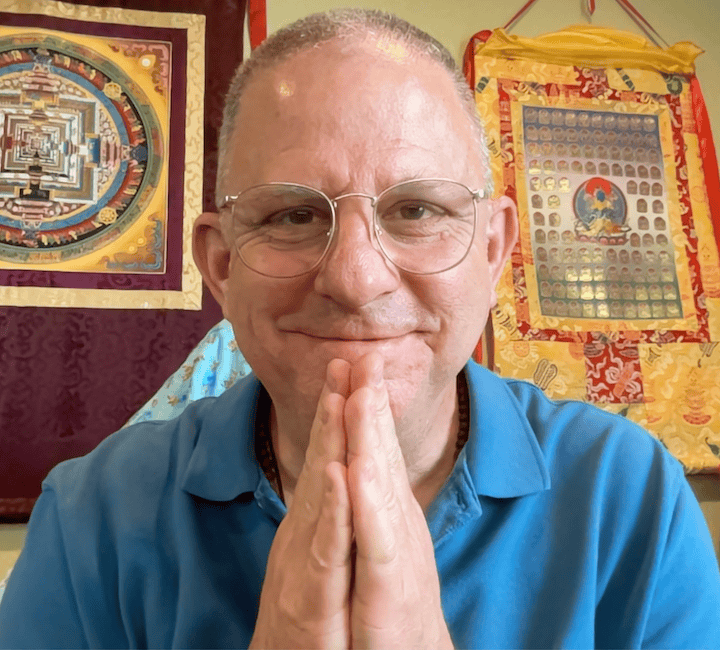
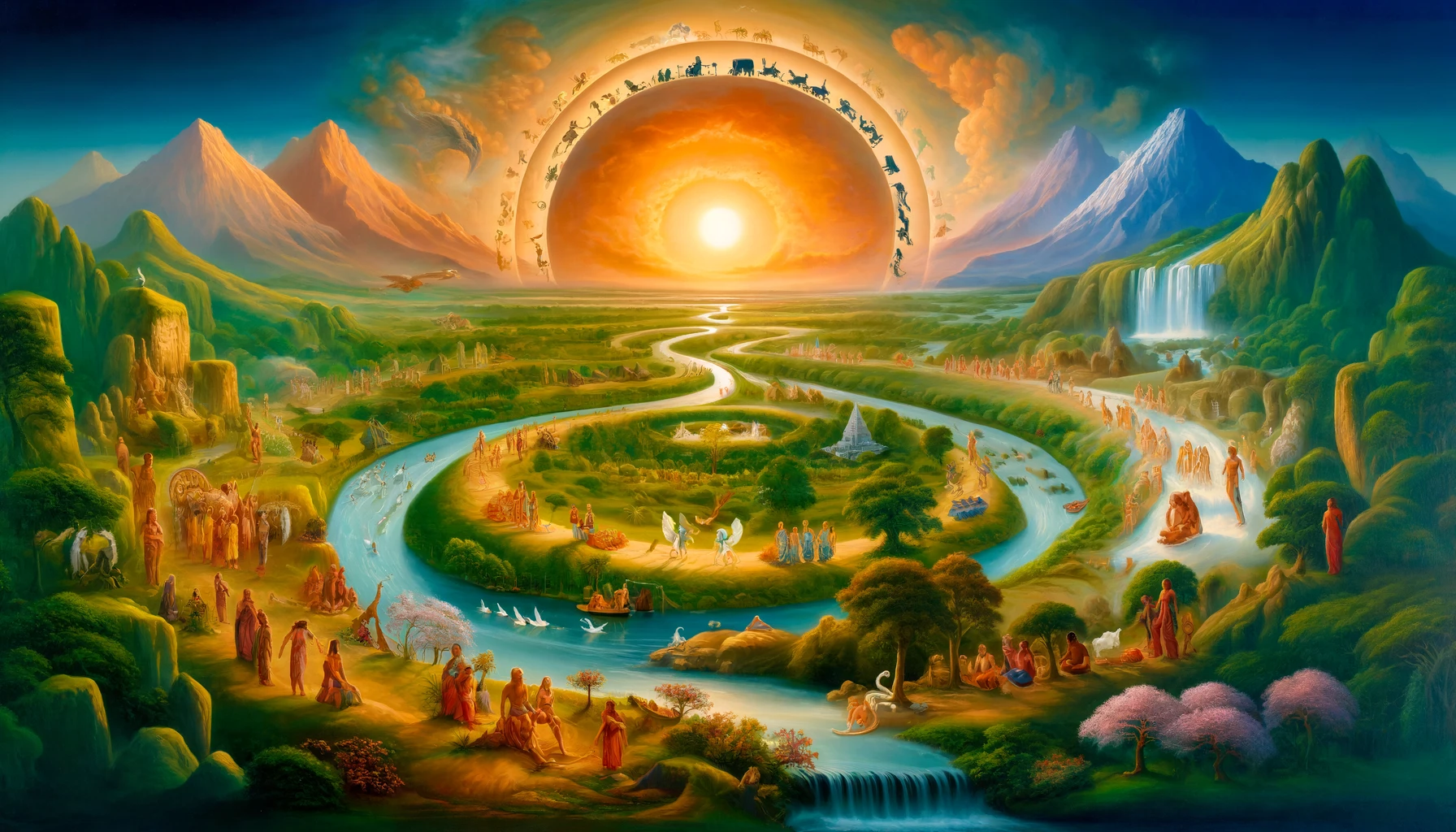
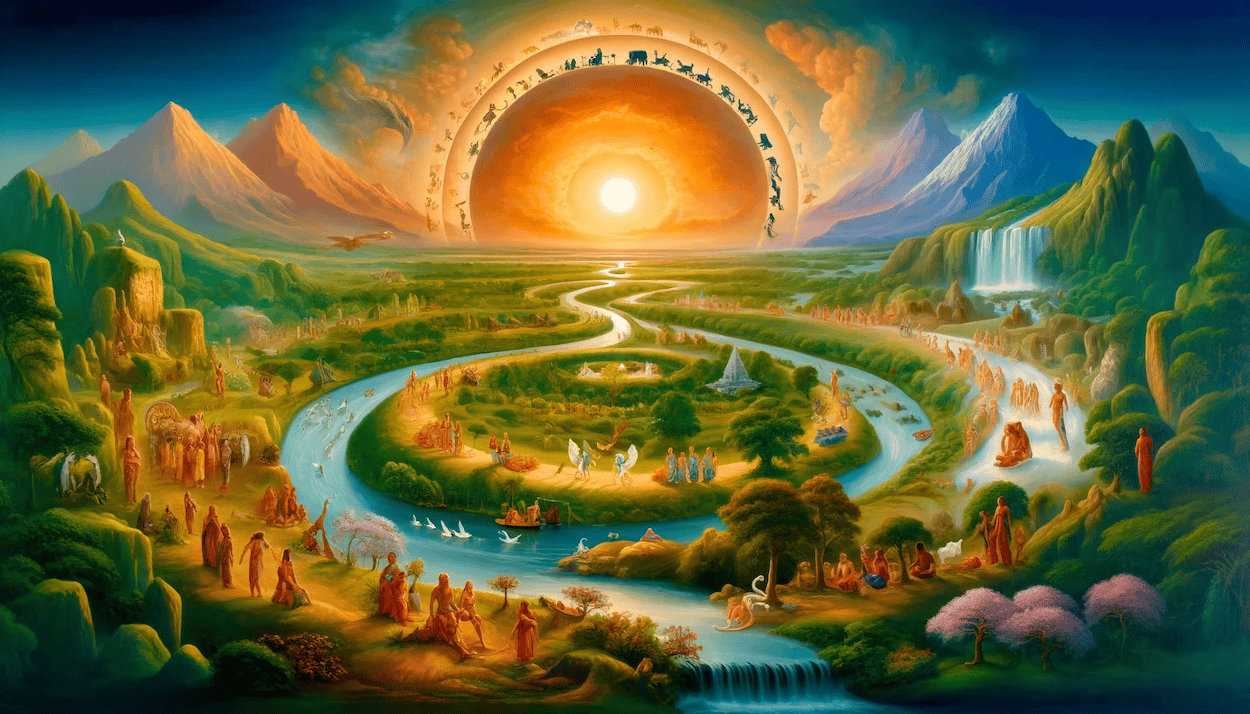 What Is Thought And How Does It Connect To Reincarnation?
What Is Thought And How Does It Connect To Reincarnation?